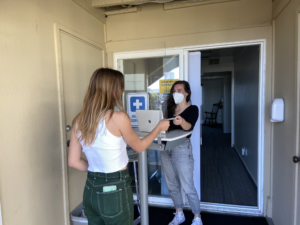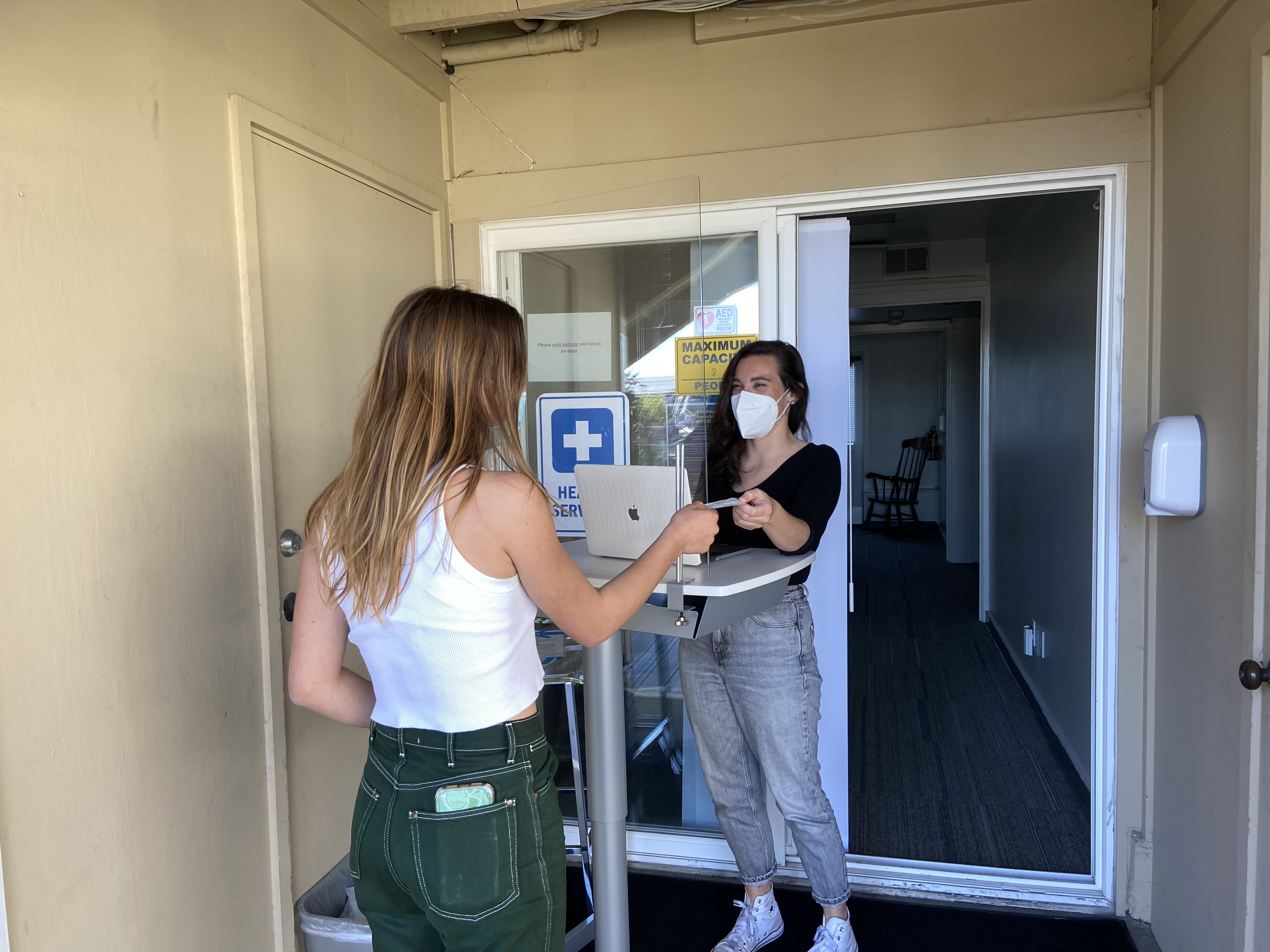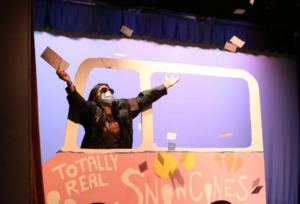In the light of the recent Omicron surge, the Centers for Disease Control and Prevention (CDC) has shortened the quarantine period from 10 to five days, without a negative test required. Compared to previous variants, Omicron is weaker and those who are fully vaccinated and boosted commonly have mild symptoms or are asymptomatic if they contract it.
As of December 27, 2021, CDC guidelines state that those who test positive can leave isolation five days after the positive test or onset of symptoms. Fully vaccinated people (including the recently approved booster) who have a COVID-19 exposure event are expected to monitor for symptoms for the five days following exposure and are recommended to test on the fifth day. Unvaccinated people are expected to quarantine for those five days.
As of publication, policy at Lick-Wilmerding for COVID-positive students, FacStaff and administration is that you may only return to school before ten full days of isolation if you can present a negative test result. This is also a CDC recommendation for those who have access to testing, but not a part of the official guideline.

photo by Nina Laser
LWHS Health Coordinator Mariah Kaitz described the reasoning behind the school’s choices regarding the adaptation of CDC guidelines to the school: “The CDC updates their policies based on numbers, what we know so far about the virus and its infectious period and all the rest of the data we have gathered so far. But, of course, it’s always up to the local health departments to take what the CDC recommends based on their data and compare it to San Francisco specifically. SFDPH (San Francisco Department of Public Health) has never steered us wrong, so I am very confident in their updates to protocols, whether it matches the CDC or not.”
However, Kaitz also talked about how the decision may have been different if LWHS was a different school with less effective protocol enforcement or resources. “I can’t really speak for environments I’m not involved in because there are so many other variables to work through. Our school is a perfect example because we follow guidelines to a tee. We are the example that shows whether or not the CDC and SFDPH protocols work or not,” she said.
Larger schools in San Francisco such as St. Ignatius College Preparatory and Lowell High School have looser policies as larger student bodies make it harder to enforce policy effectively. LWHS has 539 students enrolled. Comparatively, St. Ignatius and Lowell have around 1500 and over 2000 students, respectively.
In contrast, LWHS had a requirement until February 4 for even fully vaccinated students to test for five days after a close contact. St. Ignatius only offers an optional (but recommended) test on the fifth day. According to Grace Schwarz, a junior at St. Ignatius, these testing policies and masking policies are technically in place, but enforcement is lacking. Even the less strict recent policies at LWHS include testing on the third and fifth day after a close contact, still more cautious than St. Ignatius’ earlier policies.
“I wish masking regulations were better enforced and that there were better protocols for people who have exposure events. As of right now students will technically get detention if they disobey precautions, yet there are always a few kids in every class wearing their masks improperly or even walking through the halls without one altogether and putting it on only once they get to class,” she said.
Miriam Freedman, a junior at Lowell High School, described her experiences with the Omicron surge at a much larger school that is a part of the San Francisco Unified School District (SFUSD). Lowell does not provide testing or require it of students, but according to Freedman this issue stems from the district and state rather than from individual schools.
“So far, I have felt pretty safe at school, but I have definitely noticed a lot more people out every day which is weird and kind of scary. It’s probably a good thing because it means people aren’t coming to school with COVID-19, but I wish the school had access to more testing because I was a bit worried at first that people might be coming to school not knowing that they had Omicron,” Freedman said.
Because of establishments’ differing opinions on policies and abilities to enforce said policies, the exact way the CDC intended them, five days might be effective in one environment but risky in another. This has led to lots of controversy surrounding the shortening of the isolation period because it allows for individuals to potentially exit quarantine while they are still contagious, especially if they do not have access to accurate testing.
According to a statement made in the PBS podcast “How the latest CDC guidance on COVID-19 is creating unnecessary confusion” by William Bragham and Courtney Norris, the lack of a requirement for a negative test after only five days of isolation is still a big risk.
In the transcript of his podcast, Dr. Gerald Harmon, the President of the American Medical Association, claims that “the data shows that as many as 31% of those infected still shed the virus after five days.”
Throughout the pandemic, the public has been suspicious that some CDC statements are not completely reflective of the data and are also impacted by product shortages or the economy’s needs. As an example, the CDC waited to release the recommendation of N95 masks until there was enough availability, instead of right when they found out that N95 masks were much more effective at stopping viral transmission. Dr. Anthony Fauci, the Chief Medical Advisor in the White House, has even recognized this delayed recommendation to the public.
The concern now is that shortening isolation and quarantine periods to five days may have been influenced by the needs of businesses and schools.
For schools, both districts and independent schools are trying to avoid returning to remote learning as it creates disparities among students due to wifi issues, other things going on in their homes and a decline in students’ mental health and motivation. Having students who test positive for COVID-19 or have exposure events only quarantine for five days makes it easier for teachers to deal with student absences as they are not gone for a more extended period of time, and easier for the school to find substitutes for shorter teacher absences.
For retail and restaurant businesses, staffing shortages would cause large problems and potentially shut down a business if everyone who tested positive or was diagnosed with the Omicron variant was out for an entire 10 days.
Although it may not be a correct variable to account for in the creation of new health guidelines, staffing shortages are a very real and prevalent issue. Hospitals, schools, restaurants and other businesses have been forced to deal with the unavoidable issue of employees contracting or being exposed to COVID-19, and the chain effect of their coworkers also being exposed; there is a cascading effect.
In some workplaces, employees are pressured to be at work, even if there is a chance they might have COVID-19. According to Suhauna Hussain’s article in the LA Times, “Just wear a mask and don’t tell anyone” workplaces are filling up with sick employees.
Kristen Harknett, a professor of social behavioral sciences at UCSF, sent out a survey to service workers. 67% of the workers surveyed would go to work even when they felt sick, likely due to pressure from their bosses. As Harknett told the LA Times, “A supervisor is leaning on them, saying ‘I really need you today.’” Sick workers are told to stay silent about their illness and proceed with their work.
School employees have also been facing the ramifications of being pushed to remain in person despite unsafe conditions. In January, teachers in Oakland participated in “sick-outs” in order to demand better working conditions and safety precautions in their schools.
Teachers have also been facing the same situations as service workers. They face pressure from their bosses and departments to return to school since the availability of substitute teachers is stretched thin with so many absences.
On the other hand, the upside of the shortened isolation time is that for a milder variant of COVID-19 is much more manageable for asymptomatic people who can return to their normal lives much more quickly.
For environments such as LWHS that replicate the ideal world for which CDC and local public health agencies design their policies, shortening the isolation period to a five day minimum is a bonus on all fronts. However, even if one guideline is not enforced, allowing people to return back to their normal lives can be a big risk to take.
There is no clear path to take regarding whether schools and businesses should remain open during the Omicron surge due to so many different factors that come into play. Health guidelines are leaving it up to individuals to make their own choices regarding what kinds of risks they are willing to take.







